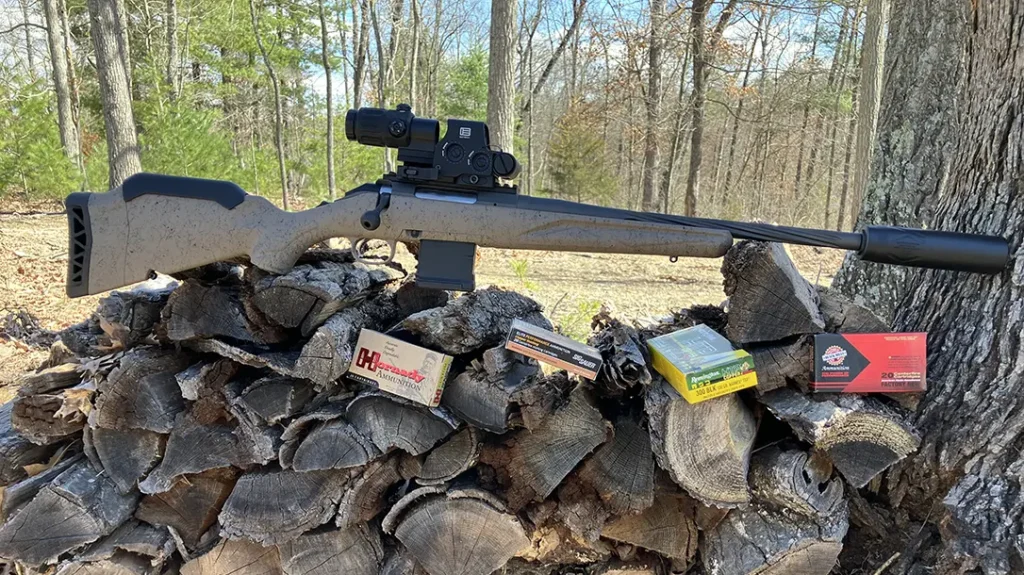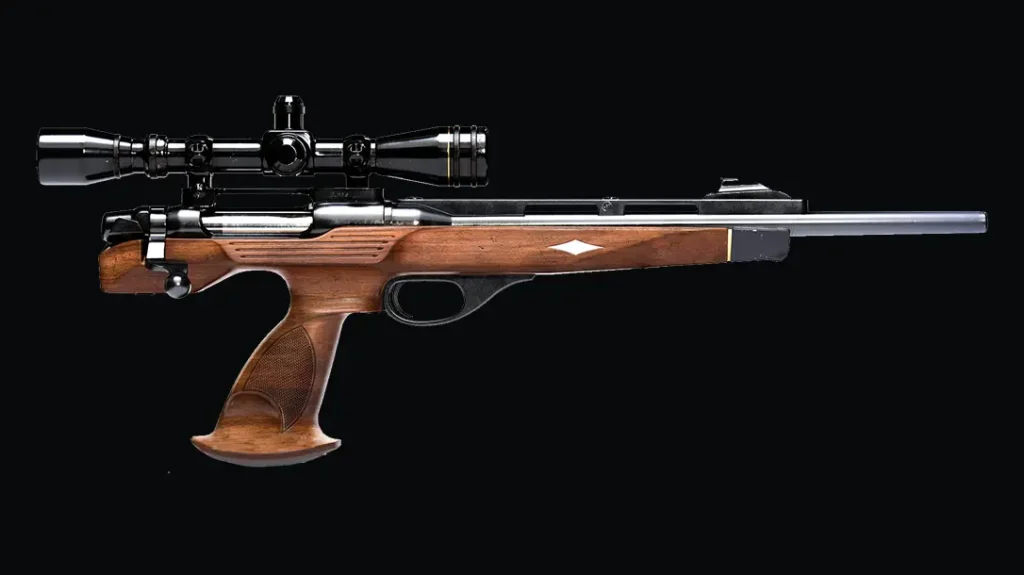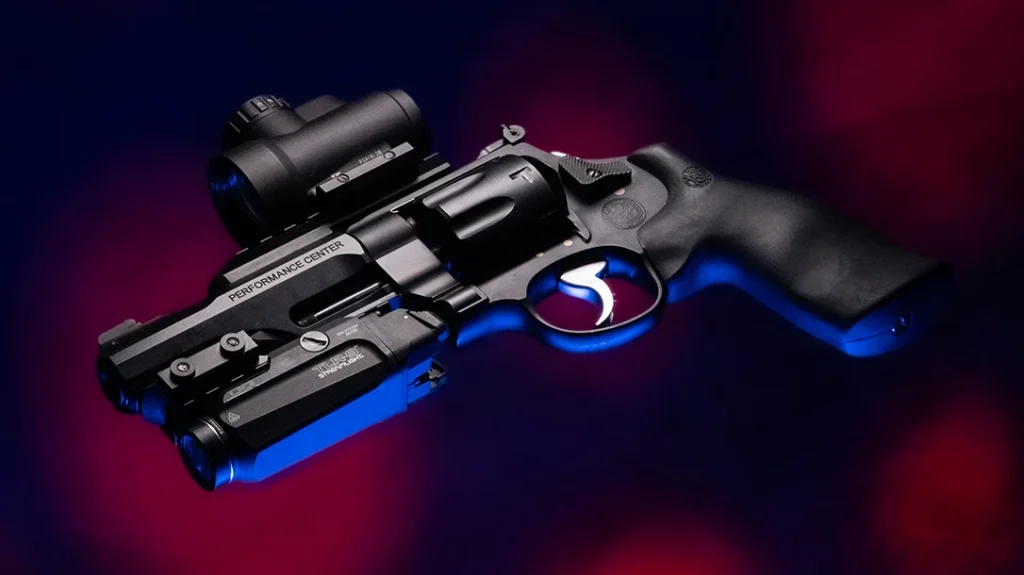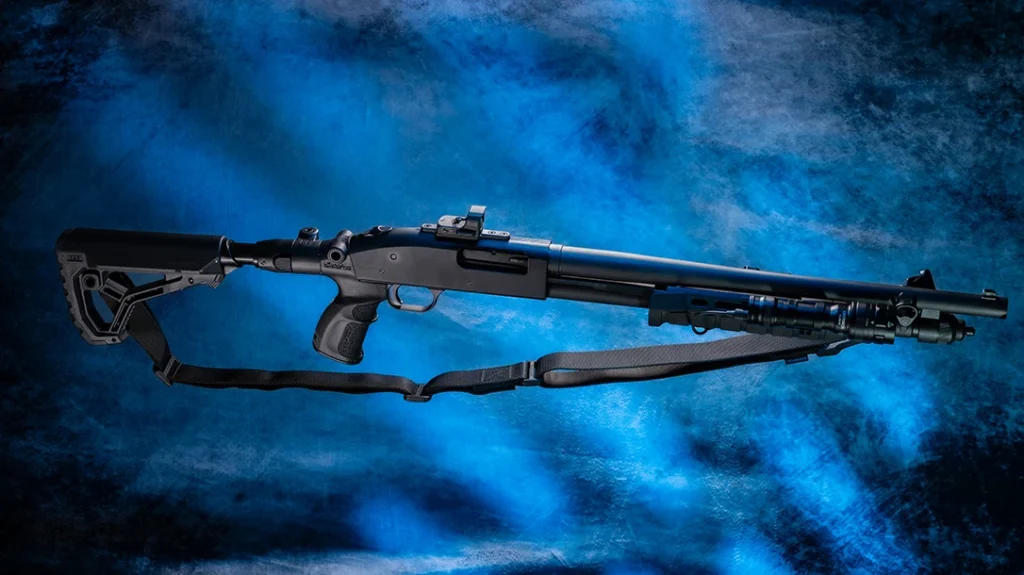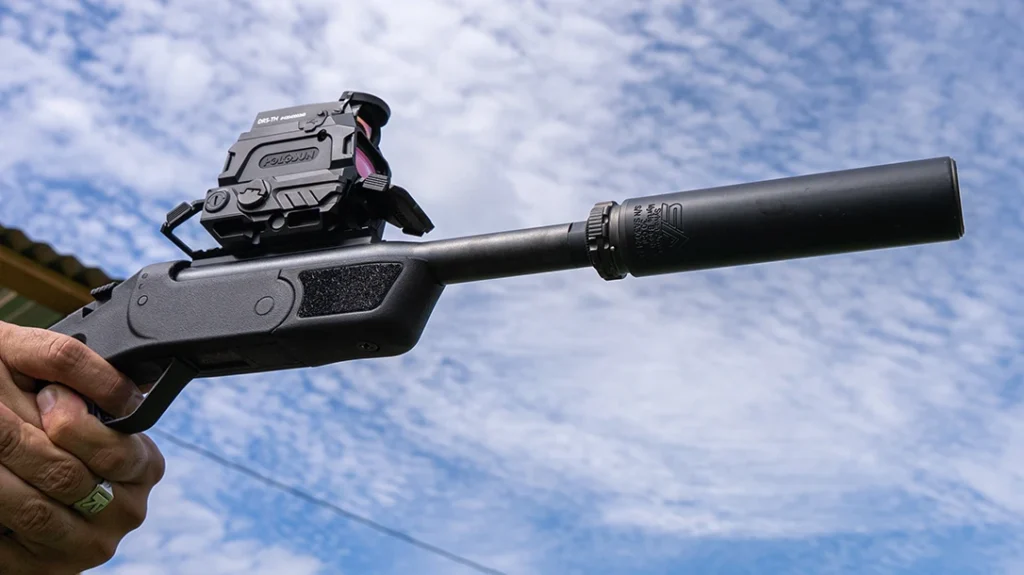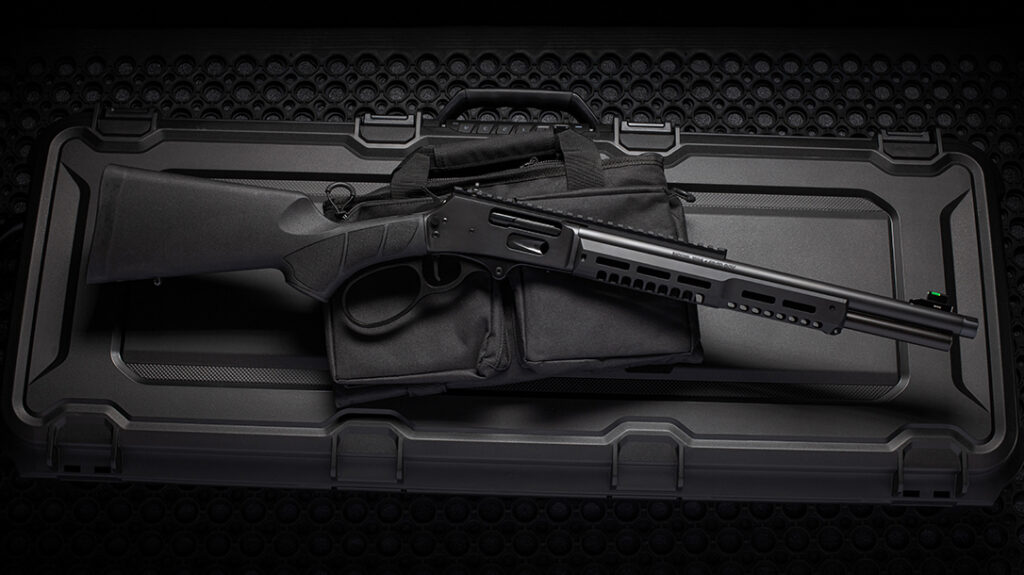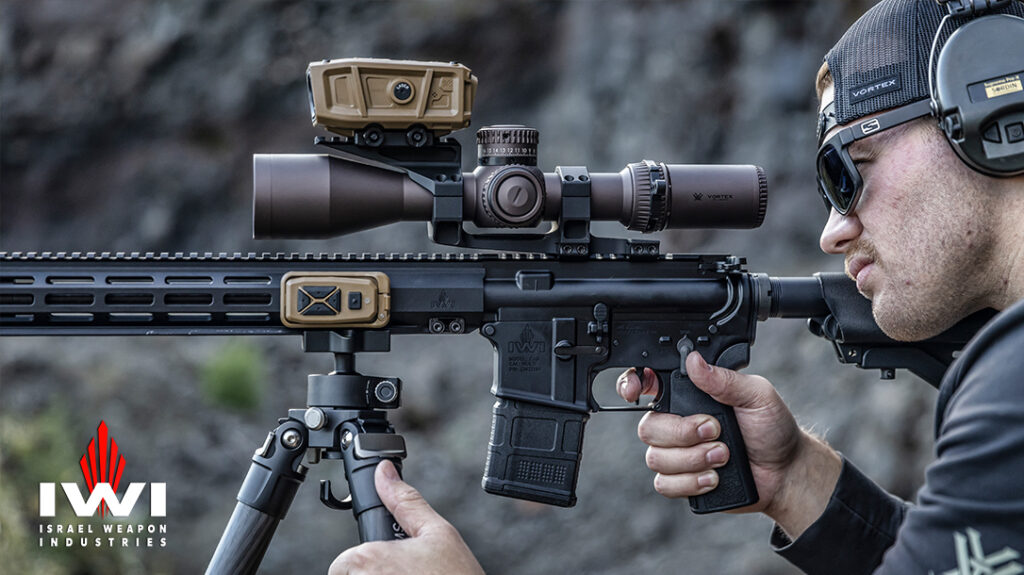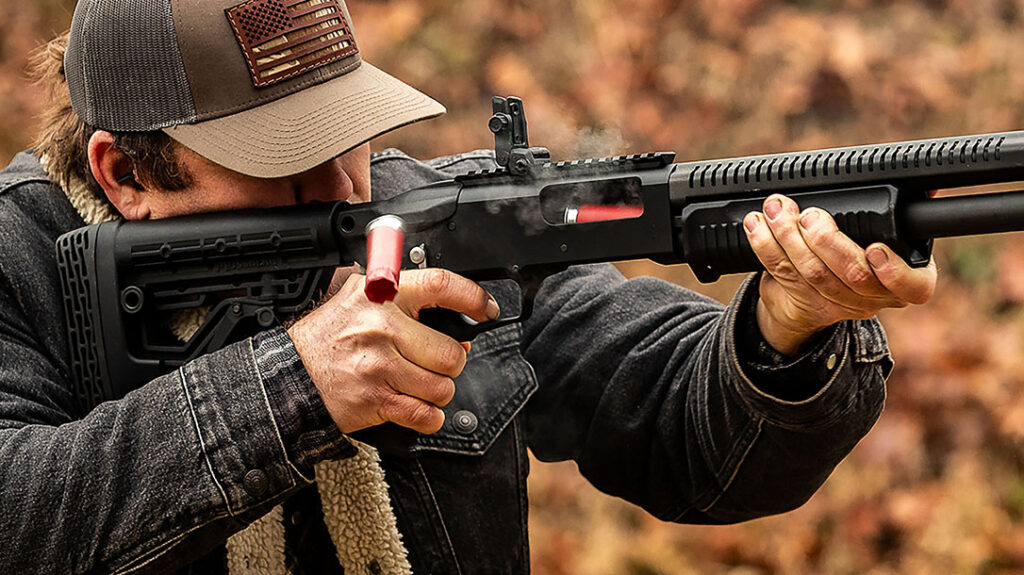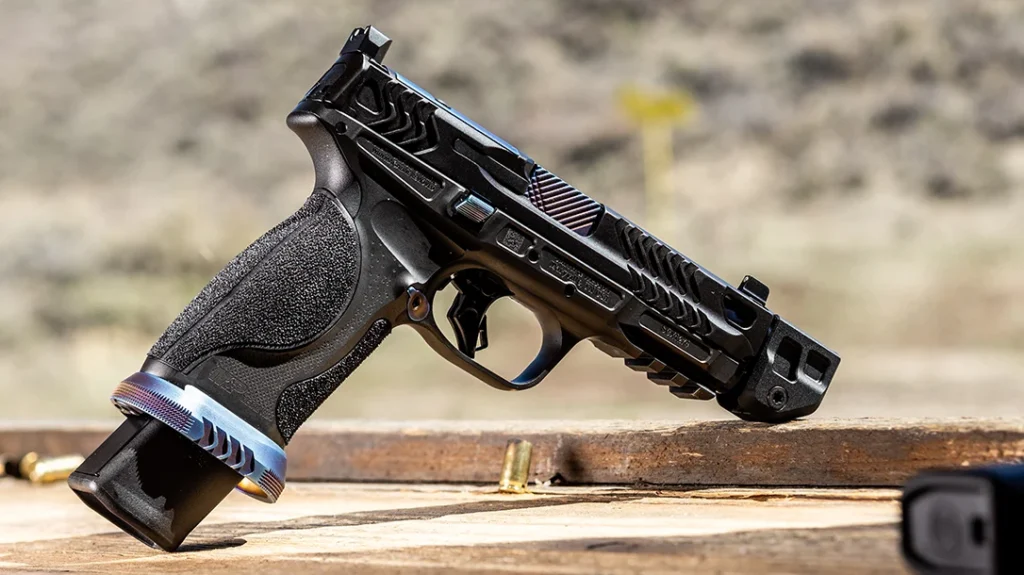These days, Sig Sauer’s Cross bolt-action lineup consists of eight different models: the original CROSS, TRAX, Magnum, STX, PRS–along with the .277 Fury and Magnum Sawtooth rifles. The eight model recently joined the lineup when Sig unveiled the Cross Sawtooth Short-Action (Sawtooth SA). Several of the new short-action Sawtooth models were available for use at the 2025 Athlon Rendezvous back in April. For a little background, the original Magnum Sawtooth was introduced by Meateater’s Steven Rinella at the 2024 SIG NEXT Event. He mentioned that he’d be hunting with these rifles in Meateater.
When it comes to the Sig Cross series, a rifle purist’s heart will be left wanting. Cross rifles have no polished wood stocks or blued metals. While the Cross family of rifles doesn’t look like your typical bolt-action, it does offer the shooter some undeniable capabilities. It also depends on which Sig Cross variant you’re looking at. Some emphasize characteristics like less weight, PRS-friendly designs or increased power via magnum chamberings.
The Sig Cross Sawtooth that is the subject of this review distinguishes itself thanks to its lightweight Proof Research carbon-fiber barrel and stainless steel radial muzzle brake. These short-action Sawtooth rifles are available in .308 Winchester and 6.5 Creedmoor.
Advertisement — Continue Reading Below
During Athlon Outdoor’s Rendezvous 2025, I was hanging out with Sig’s Mark Hanish. We were ringing steel out to several hundred yards from an elevated position. An ample stash of Sig Marksman and Platinum Hunter .308 Winchester cartridges was by our side. But then, they had to escort me away from the Cross Sawtooth; something about having to let the other writers try the Sawtooth too! (Mark promised to get a Sawtooth Short Action out to me when he got back to New Hampshire. This helped to salve my hurt feelings.)
The Sig Cross Advantage

Compared to more typical stocked or chassis bolt-action rifles which have their barreled actions bedded to said stock or chassis, Cross rifles are based on a one-piece receiver. This single-piece receiver houses everything including the bolt and the “bottom metal.” It also means that the “monolithic” Cross’ action is incredibly rigid while also having the chance to remain svelte. Its alternative receiver style eliminates the need for bedding and action screws; think of an AR-15 upper and lower receiver joined at the seams–but with a manual bolt. The Cross receiver also helps defeat some of the accuracy-robbing quirks associated with traditional bolt-action rifles while also contributing to ruggedness afield. The Sig match trigger present on this rifle offers another pleasant experience, with its slight two-stage take-up and a 3-pound break.
Advertisement — Continue Reading Below
Sig Cross Bolt & Action
Starting with the bolt, it possesses three locking lugs that give it a 60-degree handle lift—one of the shortest on the market. Its smaller bolt throw also means that optics can be mounted lower since there is less “bolt handle” to get in the way. The smoothness inherent to slick bolt also means quick bolt manipulation that translates into rapid follow-up shots and/or engaging multiple targets. The bolt lug’s rear interfacing surfaces are angled and tapered instead of squared. This tapering facilitates the locking of the bolt in place like an artillery piece’s breech.
Cross bolt heads are pinned into the bolt body. They’re left with a bit of play to enable the locking lugs to find equal bearing when the action is closed. A stout extractor is dovetailed into the rightmost lug. It reliably removes fired cases from the chamber. The ejector is a spring-loaded plunger that easily clears brass out of the receiver.
Because the locking lugs are the same diameter as the bolt body, the Cross action needs no raceway. Compare this to traditional Mauser/Rem 700-style lugs that protrude outside the bolt’s diameter and need the extra room in the receiver to be carved out. Since the Cross gets to skip that, its receiver can remain rigid while needing less material overall. And rigidity, afer all, is a must for consistent accuracy. Furthermore, the Cross’ receiver is more in-line with the barrel which serves to minimize barrel whip. Another attribute of this unique receiver design is that Cross rifles take a barrel extension and nut to secure the barrel to the action. This simplifies barrel changes. It’s also another reason why the Cross design offers a rock-solid backbone conducive to long-range shooting.
Advertisement — Continue Reading Below
“Proof” Is In The Pudding

With its 16-inch Proof Research barrel weighs, the SIG Cross Sawtooth chambered in .308 Winchester weighs 6.6 pounds.
In the beginning, the Proof Research 16-inch 1:10 twist barrel starts as a full-profile match-grade 416R stainless steel barrel blank. During the manufacturing process, this barrel’s rifling is single-point cut and then lead lapped. After being rifled, these blanks are “turned down” to reduce weight. It is then tha they’re wrapped with high-strength, aerospace-grade carbon fiber material that is impregnated with a proprietary matrix resin.
Advertisement — Continue Reading Below
The carbon fiber wrap also helps to diffuse heat along the length of the barrel (much like fiber optics transmit light). Cross Sawtooth carbon fiber barrels feature tight tolerance bore-and-groove rifling dimensions, minimum headspace and a trued chamber.
Because the carbon fiber material effectively diffuses heat, these barrels also cool faster. This means that they maintain accuracy over longer shooting sessions and have a longer overall lifespan. In a nutshell, these advanced barrels from Proof Research represent an aerospace-grade, high-fiber content composite barrel that is stronger and 64% lighter than similar all-steel barrels. More importantly, they’re just as accurate.
Taming Felt Recoil
While .308 Winchester recoil will not detach your retina, it will “get your attention.” This is especially true in a lighter 6-pound rifle with a slim buttstock that presses into your shoulder. This is why that advanced carbon fiber Proof Research barrel is capped with an “impressively effective” radial muzzle brake.
Advertisement — Continue Reading Below
This statement comes from the surprised looks on the faces of shooters after the first round is fired with little effect on the shoulder. Usually, claims of recoil-reduction are ignored since these tend to be highly subjective. However, Sig’s claim of a 40% reduction in recoil may actually be understated in the case of this particular short-action Sawtooth bolt-action rifle.
Cutting-Edge Cartridges

The .308 Winchester ammunition featured in this review, SIG Platinum Hunter and Marksman Hunter are another result of another inter industry collaboration between Sig’s ammunition division, MeatEater, Nosler and Sierra Bullets.
Advertisement — Continue Reading Below
The Sig Platinum Hunter has a 165-grain Nosler Accubond bullet loaded into nickel-plated brass with a sealed primer pocket to resist severe weather conditions. This load also happens to be the official MeatEater cartridge.
The Marksman Hunter cartridge features a 165-grain Sierra GameKing bullet. The GameKing’s thick jacket and skived nose lead to consistent expansion.
After an impressive introduction at this year’s Athlon Rendezvous in Wyoming, I was extremely interested in getting this rifle on the bench to evaluate its accuracy potential. SIG included a test-target from the factory showing 0.72 MOA accuracy with SIG 168-grain .308 Winchester match cartridges.
Advertisement — Continue Reading Below
Frankly, accuracy testing had me shaking my head—in a positive way. Both the Platinum and Marksman Hunter .308 Winchester cartridges performed in the sub-MOA realm. With five 3-round groups, average group sizes were close to ¾ MOA . And this is “hunting” ammunition!
The 16-inch barrel posted muzzle velocities in the low 2500s (feet per second).
Aside from grouping well, the Sig Cross Sawtooth short-action exhibited outstanding handling characteristics. I noticed this to be especially true when carrying and engaging targets from standing or kneeling positions. This rifle has such a great feel thanks to its form-factor. Its pistol grip provides superior overall carry qualities with, and using one hand isn’t too difficult. Every time I brought the rifle up to my shoulder, my scope’s eye-box and sight picture were right where they needed to be.
Advertisement — Continue Reading Below
Sig Optics & Parting Shots

The SIG Cross Sawtooth short-action I reviewed was topped with a SIG Optics Whiskey4 4-16×44 riflescope. The scope was held in place by SIG 30mm Alpha6 aluminum rings scope rings directly sitting over the Cross Sawtooth’s integrated Picatinny scope base.
The Whiskey4 riflescope offers versatility with its wide magnification range. Its reasonably sized 44mm objective lens diameter also helps keep bulk down and makes mounting with lower scope rings easier. With a standard retail price of $399, the SIG Whiskey4 is one of the best-valued scopes on the market. Aside from its illuminated reticle, it also includes a first-focal plane reticle.
In the end, the short-action Cross Sawtooth rifle offers so many features in such a lightweight package. This rifle offers multi-adjustable folding buttstock, and adjustable trigger that, a well-designed lightweight and low-profile ARCA hybrid M-LOK handguard, and an attractive Cerakote Moss Green finish all over.
This rifle might be the epitome of modern bolt-action design.
SPECIFICATIONS: SIG SAUER CROSS SAWTOOTH SHORT ACTION
- CALIBER: .308 Win (6.5Creedmoor also available)
- BARREL: 16-inch PROOF Research carbon fiber 1:10 twist
- OA LENGTH: 36.7-inches fully extended adjustable folding buttstock
- WEIGHT: 6.6 pounds
- CAPACITY: Detachable AICS-style 5-round magazine
MSRP: $2599
PERFORMANCE: SIG SAUER CROSS SAWTOOTH SA .308
| Sig Platinum Hunter 165-gr | |
| Average Velocity | 2514 FPS |
| Best Group | 0.50 inches |
| Average Group | 0.75 inches |
| Sig Marksman Hunter 165-gr | |
| Average Velocity | 2502 FPS |
| Best Group | 0.66 inches |
| Average Group | 0.88 inches |

